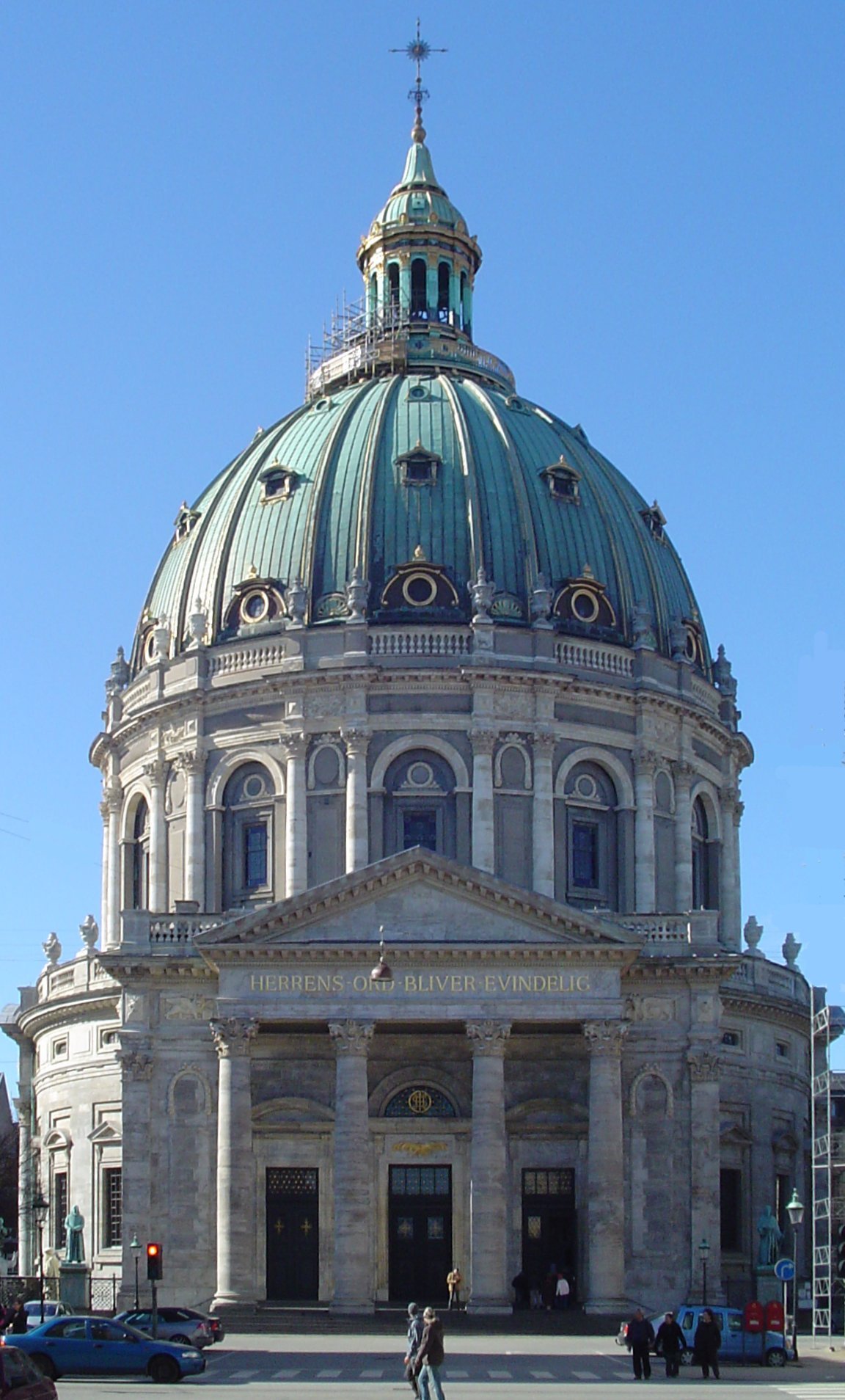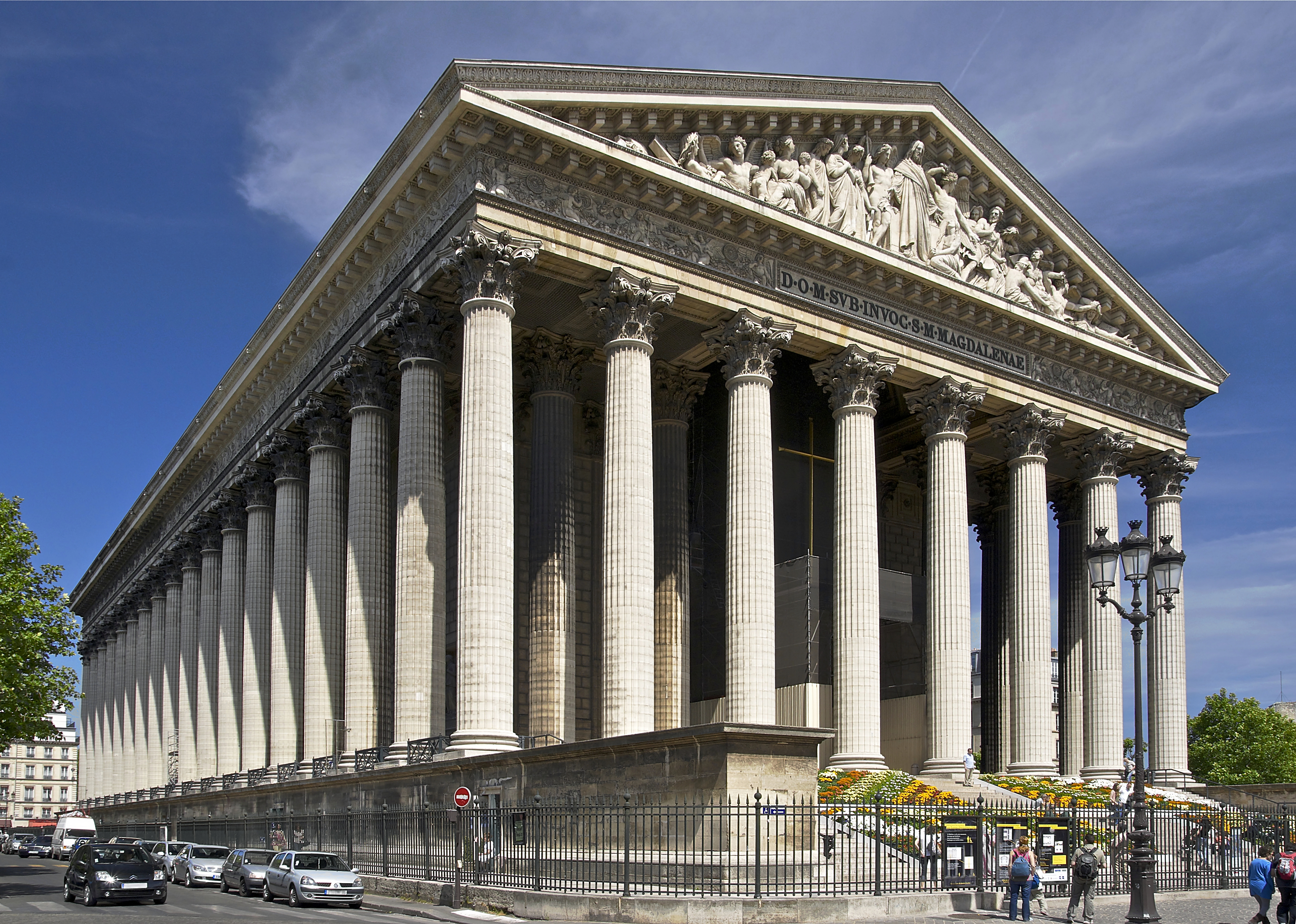|
Christian's Church
Christians's Church ( da, Christianskirken) is a church in Aarhus, Denmark. The church is situated in the northern Christiansbjerg neighbourhood on Frederikshaldsgade. It is a parish church, and the only church in Christians Parish, under the Diocese of Aarhus and within the Church of Denmark, the Danish state church. The church serves some 14.000 parishioners in Christians Parish and holds weekly sermons along with weddings, burials and baptisms. The present Christians's Church was inaugurated on 2 March, 1958. The congregation in Christiansbjerg had for some years made do with a crypt, built during the Second World War, which had doubled as a temporary church. The crypt church replaced an older Christian's Church which had been in use since 1913 to 1946. The old church was found too small with just 90 seats, and an architects' contest was established in 1937 to find a design for a new church. The contest was won by Aage C. Nielsen. A committee led by the bishop of the Diocese of ... [...More Info...] [...Related Items...] OR: [Wikipedia] [Google] [Baidu] |
Aarhus N
Aarhus N is a postal district in the city of Aarhus, consisting of Trøjborg, Risskov, Vejlby, Skejby, Vorrevangen and Christiansbjerg, all with postal code 8200. Aarhus N is an abbreviation for Aarhus Nord (lit. "Aarhus North") and is located north of the city centre. It is the highest lying area of Aarhus. Many of the neighborhoods in the district were once small, separated farms and villages, but developed and grew through the Industrial Revolution and later merged with the rest of Aarhus. Aarhus N has 34,512 inhabitants (2016 statistics). Boroughs and neighbourhoods Christiansbjerg Christiansbjerg is one of Aarhus's older boroughs, located beyond the historic city center. In the 1500-1800s, this area was covered by agricultural fields and pastures with grazing livestock. In the 1800s, several larger farms was built here and their names, such as Katrinebjerg, Reginehøj, Højvang and Vorregård, are still in use today. In the beginning of the 1900s, the development of C ... [...More Info...] [...Related Items...] OR: [Wikipedia] [Google] [Baidu] |
Denmark
) , song = ( en, "King Christian stood by the lofty mast") , song_type = National and royal anthem , image_map = EU-Denmark.svg , map_caption = , subdivision_type = Sovereign state , subdivision_name = Kingdom of Denmark , established_title = Consolidation , established_date = 8th century , established_title2 = Christianization , established_date2 = 965 , established_title3 = , established_date3 = 5 June 1849 , established_title4 = Faroese home rule , established_date4 = 24 March 1948 , established_title5 = EEC accession , established_date5 = 1 January 1973 , established_title6 = Greenlandic home rule , established_date6 = 1 May 1979 , official_languages = Danish , languages_type = Regional languages , languages_sub = yes , languages = GermanGerman is recognised as a protected minority language in the South Jutland area of Denmark. , demonym = , capital = Copenhagen , largest_city = capital , coordinates = , ethnic_groups = , ethnic_gro ... [...More Info...] [...Related Items...] OR: [Wikipedia] [Google] [Baidu] |
Church Of Denmark
The Evangelical-Lutheran Church in Denmark or National Church, sometimes called the Church of Denmark ( da, Folkekirken, literally: "The People's Church" or unofficially da, Den danske folkekirke, literally: "The Danish People's Church"; kl, Ilagiit, literally: "The Congregation"), is the established, state-supported church in Denmark. The supreme secular authority of the church is composed of the reigning monarch and Denmark's Parliament, the Folketing. , 73.2% of the population of Denmark are members,Church membership 1990-2021 Kirkeministeriet though membership is voluntary.Freedom of re ... [...More Info...] [...Related Items...] OR: [Wikipedia] [Google] [Baidu] |
Church (building)
A church, church building or church house is a building used for Christian worship services and other Christian religious activities. The earliest identified Christian church is a house church founded between 233 and 256. From the 11th through the 14th centuries, there was a wave of church construction in Western Europe. Sometimes, the word ''church'' is used by analogy for the buildings of other religions. ''Church'' is also used to describe the Christian religious community as a whole, or a body or an assembly of Christian believers around the world. In traditional Christian architecture, the plan view of a church often forms a Christian cross; the center aisle and seating representing the vertical beam with the bema and altar forming the horizontal. Towers or domes may inspire contemplation of the heavens. Modern churches have a variety of architectural styles and layouts. Some buildings designed for other purposes have been converted to churches, while many ori ... [...More Info...] [...Related Items...] OR: [Wikipedia] [Google] [Baidu] |
Brick
A brick is a type of block used to build walls, pavements and other elements in masonry construction. Properly, the term ''brick'' denotes a block composed of dried clay, but is now also used informally to denote other chemically cured construction blocks. Bricks can be joined using mortar, adhesives or by interlocking them. Bricks are usually produced at brickworks in numerous classes, types, materials, and sizes which vary with region and time period, and are produced in bulk quantities. ''Block'' is a similar term referring to a rectangular building unit composed of similar materials, but is usually larger than a brick. Lightweight bricks (also called lightweight blocks) are made from expanded clay aggregate. Fired bricks are one of the longest-lasting and strongest building materials, sometimes referred to as artificial stone, and have been used since circa 4000 BC. Air-dried bricks, also known as mud-bricks, have a history older than fired bricks, and have an add ... [...More Info...] [...Related Items...] OR: [Wikipedia] [Google] [Baidu] |
Diocese Of Aarhus
In church governance, a diocese or bishopric is the ecclesiastical district under the jurisdiction of a bishop. History In the later organization of the Roman Empire, the increasingly subdivided provinces were administratively associated in a larger unit, the diocese (Latin ''dioecesis'', from the Greek term διοίκησις, meaning "administration"). Christianity was given legal status in 313 with the Edict of Milan. Churches began to organize themselves into dioceses based on the civil dioceses, not on the larger regional imperial districts. These dioceses were often smaller than the provinces. Christianity was declared the Empire's official religion by Theodosius I in 380. Constantine I in 318 gave litigants the right to have court cases transferred from the civil courts to the bishops. This situation must have hardly survived Julian, 361–363. Episcopal courts are not heard of again in the East until 398 and in the West in 408. The quality of these courts was lo ... [...More Info...] [...Related Items...] OR: [Wikipedia] [Google] [Baidu] |
Aarhus
Aarhus (, , ; officially spelled Århus from 1948 until 1 January 2011) is the second-largest city in Denmark and the seat of Aarhus Municipality. It is located on the eastern shore of Jutland in the Kattegat sea and approximately northwest of Copenhagen. The largest city in Jutland, Aarhus anchors the Central Denmark Region and the statistical region ' (''LØ'') (lit.: Province East Jutland). The LØ is the second most populous statistical region in Denmark with an estimated population of 903,974 (). Aarhus Municipality defines the greater Aarhus area as itself and eight adjacent municipalities totalling 952,824 inhabitants () which is roughly analogous to the municipal and commercial collaboration Business Region Aarhus. The city proper, with an estimated population of 285,273 inhabitants (), ranks as the 2nd-largest city in Denmark. Aarhus dates back to at least the late 8th century and is among the oldest cities in Denmark. It was founded as a harbour settlement at ... [...More Info...] [...Related Items...] OR: [Wikipedia] [Google] [Baidu] |
Second World War
World War II or the Second World War, often abbreviated as WWII or WW2, was a world war that lasted from 1939 to 1945. It involved the World War II by country, vast majority of the world's countries—including all of the great powers—forming two opposing military alliances: the Allies of World War II, Allies and the Axis powers. World War II was a total war that directly involved more than 100 million Military personnel, personnel from more than 30 countries. The major participants in the war threw their entire economic, industrial, and scientific capabilities behind the war effort, blurring the distinction between civilian and military resources. Air warfare of World War II, Aircraft played a major role in the conflict, enabling the strategic bombing of population centres and deploying the Atomic bombings of Hiroshima and Nagasaki, only two nuclear weapons ever used in war. World War II was by far the List of wars by death toll, deadliest conflict in hu ... [...More Info...] [...Related Items...] OR: [Wikipedia] [Google] [Baidu] |
Aage C
Aage is a Danish masculine given name and a less common spelling of the Norwegian given name Åge. Variants include the Swedish name Åke. People with the name Aage include: *Aage Bendixen (1887–1973), Danish actor *Aage Berntsen (1885–1952), Danish Olympic fencer, doctor writer and artist *Aage Bertelsen (1873–1945), Danish painter *Aage Birch (1926–2017), Danish sailor *Aage Bohr (1922–2009), Danish nuclear physicist and Nobel laureate, son of Niels Bohr *Aage Borchgrevink (born 1969), Norwegian writer and literary critic *Aage Brix (1894–1963), American soccer player *Aage Dons (1903–1993), Danish writer *Aage Emborg (1883–1953), Danish composer *Aage Eriksen (1917-1998), Norwegian wrestler and Olympic medallist in Greco-Roman wrestling *Aage Fønss (1887–1976), Danish opera singer and actor *Aage Fahrenholtz (1901–1990), Danish boxer *Aage Foss (1885–1952), Danish film actor *Aage Frandsen (1890–1968), Danish gymnast *Aage Friis (1870–1949), Danish hi ... [...More Info...] [...Related Items...] OR: [Wikipedia] [Google] [Baidu] |
Bodil Koch
Bodil Koch (25 October 1903 – 7 January 1972) was the wife of a prominent professor, a Social Democrat, and a minister. She was married to professor Hal Koch, an advocate of democracy as a continuing deliberation instead of the majority's rights over the minorities. She represented the Social Democrats (Denmark), Social Democrats in the Danish Parliament, Folketinget from 1947 – 1968. In 1947, she was elected to the Folketing and three years later she became the first female Minister for Ecclesiastical Affairs of Denmark, Minister of Ecclesiastical Affairs in the world and the third female minister in Denmark. She only held the office for six weeks, as Prime Minister of Denmark, Prime Minister Hans Hedtoft resigned 30 October 1950 over a dispute on the continued rationing of butter. When the Social Democrats (Denmark), Social Democrats returned to the power in 1953, she again was appointed Minister of Ecclesiastical Affairs. She held office until 1966, when she was ap ... [...More Info...] [...Related Items...] OR: [Wikipedia] [Google] [Baidu] |
Lutheran Churches In Aarhus
Lutheranism is one of the largest branches of Protestantism, identifying primarily with the theology of Martin Luther, the 16th-century German monk and reformer whose efforts to reform the theology and practice of the Catholic Church launched the Protestant Reformation. The reaction of the government and church authorities to the international spread of his writings, beginning with the ''Ninety-five Theses'', divided Western Christianity. During the Reformation, Lutheranism became the state religion of numerous states of northern Europe, especially in northern Germany, Scandinavia and the then-Livonian Order. Lutheran clergy became civil servants and the Lutheran churches became part of the state. The split between the Lutherans and the Roman Catholics was made public and clear with the 1521 Edict of Worms: the edicts of the Diet condemned Luther and officially banned citizens of the Holy Roman Empire from defending or propagating his ideas, subjecting advocates of Lutheranism ... [...More Info...] [...Related Items...] OR: [Wikipedia] [Google] [Baidu] |







.jpg)